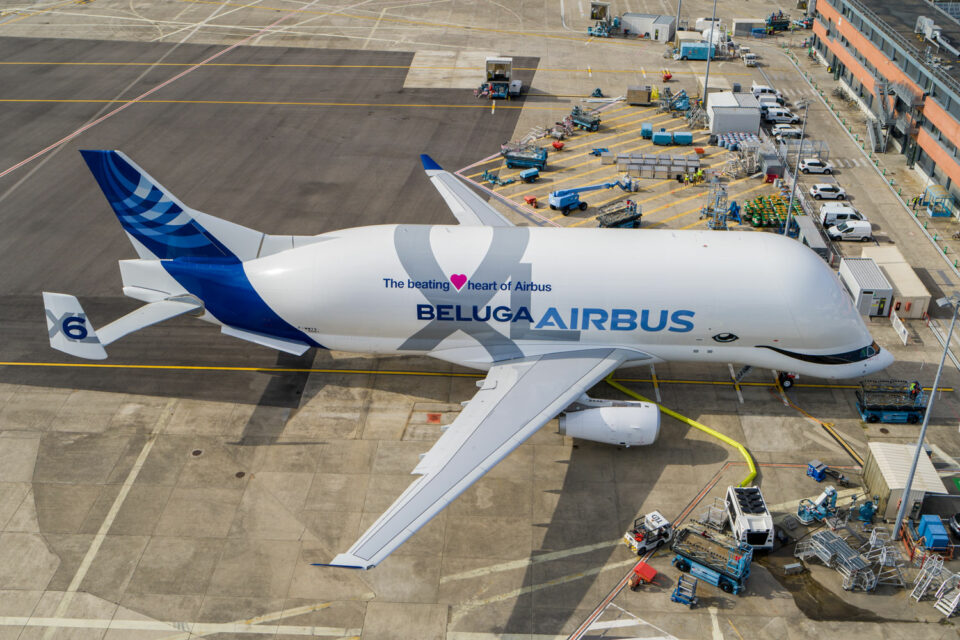The sixth and final BelugaXL completed its maiden flight on July 21, Airbus revealed on its social media profiles.
The cargo aircraft developed to transport large parts of the manufacturer’s jets is based on the A330-200 and offers 30% more capacity than the BelugaST, built on the A300-600 platform.
Called by Airbus an oversized cargo aircraft, the Beluga family has a fundamental task in the production of the European company’s commercial jets.
Without it, it would be impossible to maintain several assembly lines and component factories in countries such as France, Germany, Spain, the United Kingdom and the United States.
Most popular posts
[wpp range=’last24hours’ wpp thumbnail_width=100 thumbnail_height=75 limit=3 stats_views=0 order_by=’views’]
BelugaXL number six is registered with the registration F-WWYX and has some differences in its painting, among them the phrases “The beating heart of Airbus” and “Also flying outsized cargo to your destination” in addition to the design of the whale with a wink on the left side.
The first of the new BelugaXL has just completed five years since its maiden flight on July 19, 2018. The aircraft was certified by EASA in 2019 and entered service in February 2021, taking over the role of the former BelugaST, now providing services to third parties.

Super transporter
At 63 meters long and 8 meters wide, the new Beluga is the plane with the largest cargo compartment in the world. According to the manufacturer, the model can carry two wings of the A350 XWB, while the BelugaST carried only one. With a maximum payload of 51 tonnes, the freighter has a range of 4,000 km.
The BelugaXL program was launched in November 2014 to meet Airbus’ new logistic transport requirements. The aircraft’s special shape with a large cargo door above the flight deck allows the boarding of entire wings and large sections of fuselages.
Follow ADN: Instagram | Twitter | Facebook
Before transporting aeronautical components with the BelugaST, Airbus carried out this same task with a fleet of Super Guppy, a four-engine turboprop freighter developed by Boeing in the 1960s.
With the development of increasingly larger aircraft, a larger capacity freighter was needed, a situation that was repeated again with the demand for the BelugaXL.

